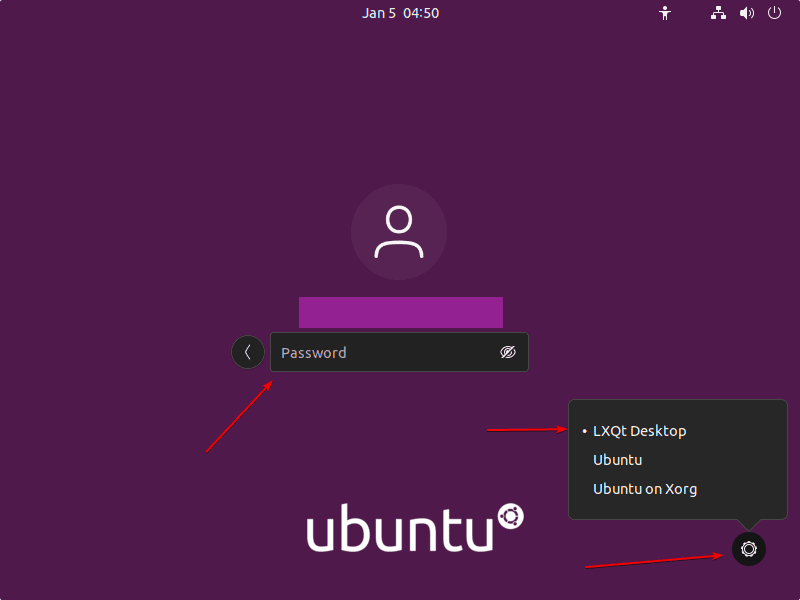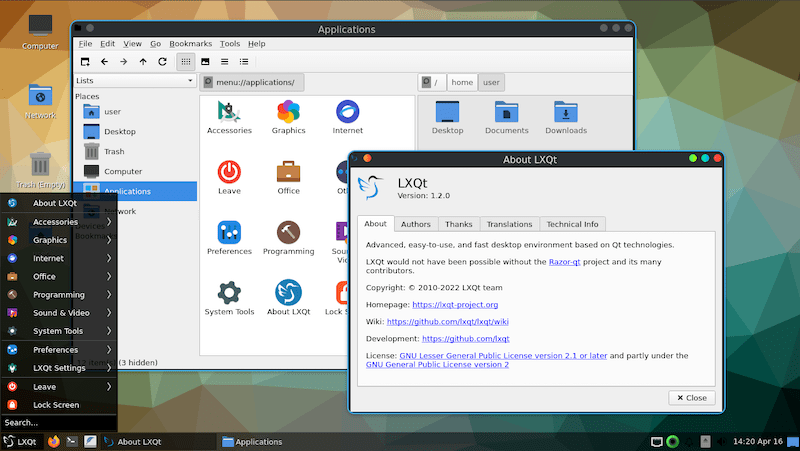How To Install LXQt Desktop on Ubuntu 24.04 LTS

In the world of Linux, desktop environments play a crucial role in shaping user experience. Among various options available, LXQt stands out as a lightweight and efficient choice, particularly for users seeking to optimize performance on older hardware or simply preferring a minimalist interface. This article provides a comprehensive guide on how to install LXQt Desktop on Ubuntu 24.04 LTS, ensuring that you can enjoy a fast and responsive computing environment.
What is LXQt?
LXQt is a modern desktop environment that combines the lightweight nature of its predecessor, LXDE, with the power of the Qt toolkit. Designed for speed and efficiency, it offers a user-friendly interface that is both visually appealing and functional. LXQt is particularly suitable for users who want to conserve system resources while still enjoying a fully-featured desktop experience.
Why Choose LXQt on Ubuntu 24.04 LTS?
Ubuntu 24.04 LTS is known for its stability and support, making it an excellent base for various desktop environments. Opting for LXQt on this platform allows users to:
- Enhance Performance: LXQt consumes fewer resources compared to heavier environments like GNOME or KDE Plasma, making it ideal for older machines.
- Simplify User Experience: Its clean and straightforward design helps users focus on their tasks without unnecessary distractions.
- Customization: LXQt offers various customization options, allowing users to tailor their desktop environment to their preferences.
Prerequisites
System Requirements
Before diving into the installation process, ensure your system meets the following minimum requirements:
- RAM: At least 512 MiB (1 GiB recommended for smoother performance).
- CPU: Any modern processor should suffice.
- Disk Space: Approximately 1 GB of free space for installation.
Necessary Permissions
You will need access to a non-root user account with sudo privileges to install software packages on Ubuntu. This ensures that you can execute commands requiring administrative rights without compromising system security.
Network Access
An active internet connection is essential for downloading the necessary packages during installation. Ensure your network is stable before proceeding.
Preparing Your System
Update Ubuntu Packages
The first step in preparing your system is to update your existing packages. This ensures that you have the latest security patches and software updates.
sudo apt update && sudo apt upgradeThis command refreshes your package list and upgrades all installed packages to their latest versions. It’s a good practice to perform this step regularly, especially before installing new software.
Install Additional Tools (Optional)
You might consider installing some additional tools that can enhance your system management experience. While not mandatory, they can be quite useful:
sudo apt install wget apt-transport-https gnupg2 software-properties-commonThis command installs several utilities that facilitate package management and downloading files from the internet.
Installing the LXQt Desktop Environment
Step-by-Step Installation Process
LXQt is readily available in Ubuntu’s default repositories, making the installation process straightforward. Follow these steps to install it:
sudo apt install task-lxqt-desktopThis command installs the complete LXQt desktop environment along with essential applications and utilities that come bundled with it.
Minimal Installation Option
If you prefer a minimal installation without additional applications, you can opt for this command instead:
sudo apt install lxqtThis option installs only the core components of the LXQt desktop environment, allowing you to build your setup from scratch according to your needs.
Choosing a Display Manager
A display manager controls user sessions and manages graphical logins. During the installation process, you may be prompted to select one. The recommended display manager for LXQt is sddm, but you can also choose gdm3. If prompted, select your preferred option using the arrow keys and press Enter.
sudo apt install sddmConfiguring and Switching to LXQt Desktop
Rebooting the System
After successfully installing LXQt, reboot your system to apply changes:
sudo rebootSelecting LXQt at Login
Upon rebooting, you will reach the login screen. Here’s how to select LXQt as your desktop environment:
- Click on the “Gear” icon, typically located near your username.
- Select “LXQt” from the list of available desktop environments.
- Enter your password and log in.

You should now be greeted by the LXQt desktop environment!

Exploring the LXQt Desktop Environment
Overview of Key Features
The LXQt desktop environment comes with several core components designed for efficiency and usability:
- pcmanfm-qt: A lightweight file manager that provides essential file management functionalities with an intuitive interface.
- LXTerminal: A simple yet powerful terminal emulator that supports basic command-line operations.
- LXSession: Manages user sessions effectively, allowing you to save session states or logout easily.
Customizing Your Experience
LXQt offers various customization options that allow you to personalize your desktop environment according to your preferences:
- Themes: Change window decorations and icons by navigating to LXQt Settings > Appearance > Style.
- Pannels: Add or remove panels by right-clicking on an existing panel and selecting “Add Panel.” You can then configure it with various applets like weather widgets or system monitors.
- Shortcuts: Customize keyboard shortcuts by going to LXQt Settings > Keyboard and Mouse > Keyboard Shortcuts.
Resource Usage Comparison
LXQt has been noted for its low resource usage compared to other desktop environments like GNOME or KDE Plasma. For users operating older hardware or those who prefer speed over aesthetics, switching to LXQt can lead to significant performance improvements. Users often report faster boot times and quicker application launches after making this transition.
Updating and Maintaining LXQt
The maintenance of your LXQt installation primarily involves keeping your system up-to-date. Regular updates ensure that you benefit from security patches and new features. To update your system, use the following command:
sudo apt update && sudo apt upgradeThis command checks for updates in all installed packages, including those related to LXQt, ensuring optimal performance and security over time.
Troubleshooting Common Issues
Display Manager Conflicts
If you encounter issues logging into LXQt after installation, it may be due to conflicts between display managers such as gdm3 (GNOME Display Manager) and sddm (Simple Desktop Display Manager). To resolve this issue:
- If you’re unable to select LXQt at login, try switching back to sddm by running:
sudodpkg-reconfigure sddm - Select sddm as your default display manager when prompted.
- If problems persist, consider reinstalling sddm:
sudopurge sddm sudoinstall sddm - You can also check logs in
/var/log/syslogor~/.xsession-errorsfor more detailed error messages.
Missing Dependencies or Broken Packages
If you encounter errors related to missing dependencies or broken packages during installation or while launching applications in LXQt, use this command to fix them:
sudoadmin --fix-broken installThis command attempts to resolve any broken dependencies automatically by installing missing packages or removing problematic ones.
If issues persist after this step, consider checking specific package names using:
sudodpkg -l | grep lxqtThis command lists all installed packages related to lxqt so you can identify potential problems.
Selecting Back Another Desktop Environment
If you decide that you want to switch back from LXQt to another desktop environment like GNOME or KDE Plasma:
-
- You can log out from your current session.
- Select another desktop environment from the same “Gear” icon menu at login.
- If necessary, uninstall lxqt using:
sudopurge lxqt sudopurge task-lxqt-desktop
This will remove all associated packages if you no longer wish to use it.
Congratulations! You have successfully installed the LXQt. Thanks for using this tutorial for installing the LXQt lightweight desktop environment on Ubuntu 24.04 LTS system. For additional help or useful information, we recommend you check the official LXQt website.